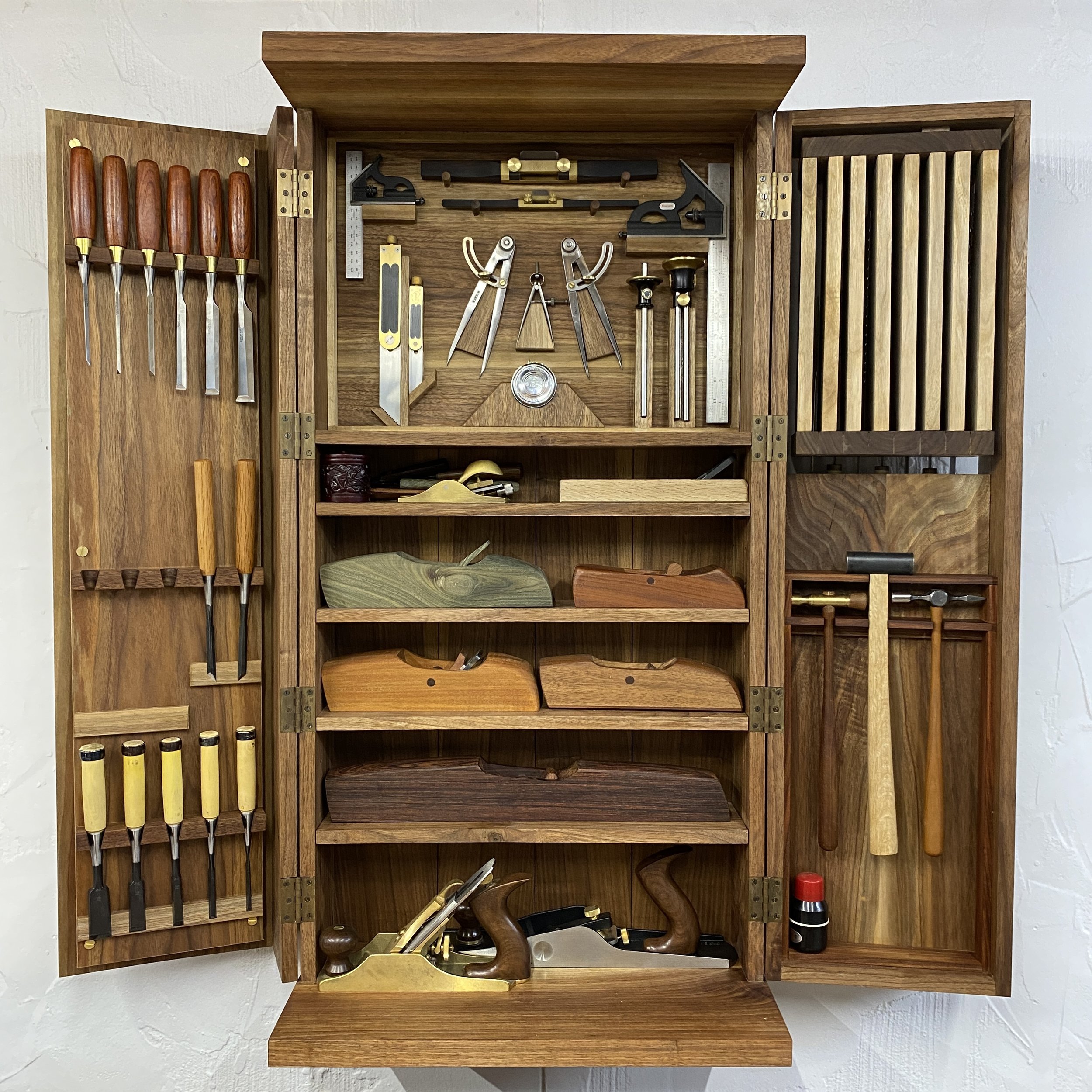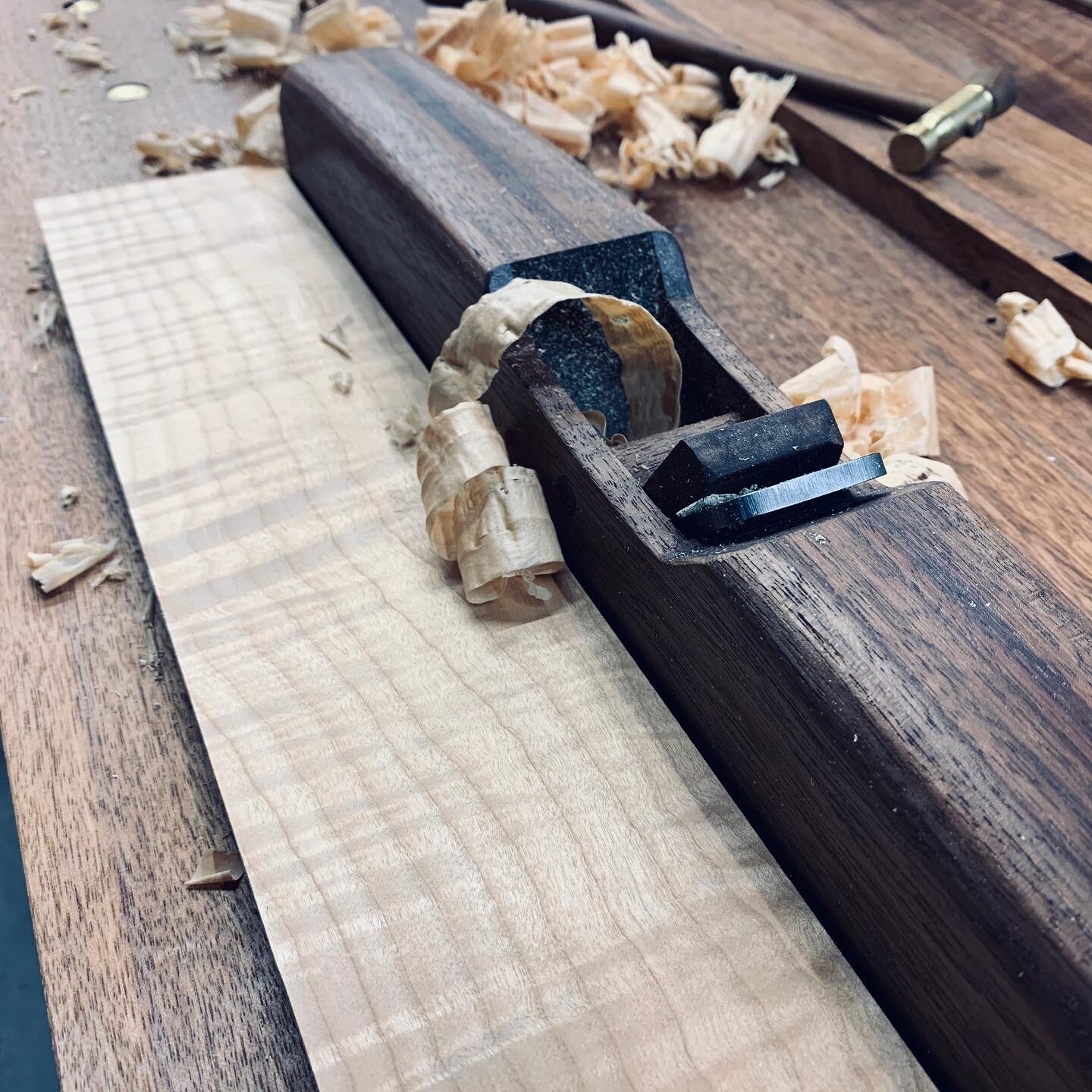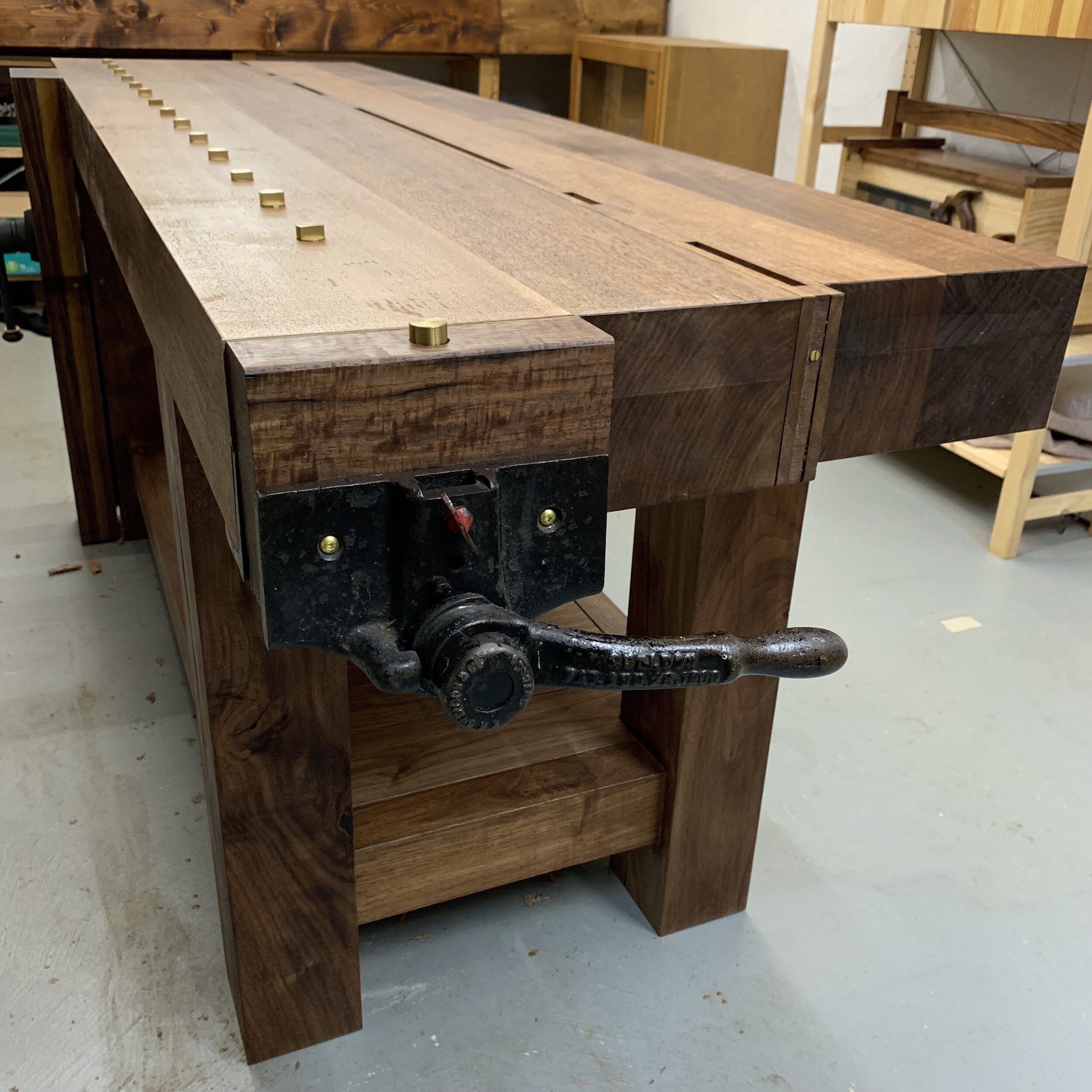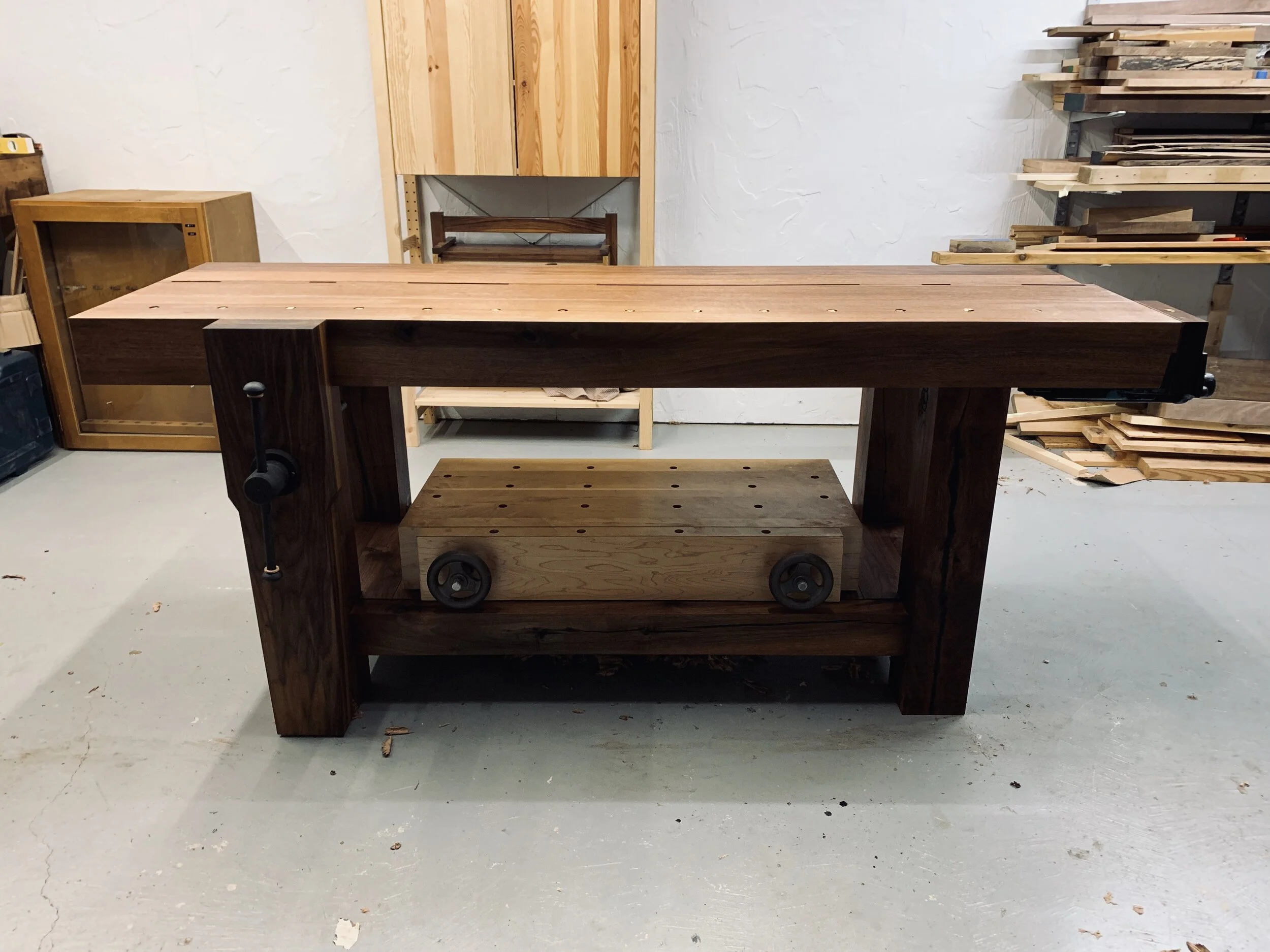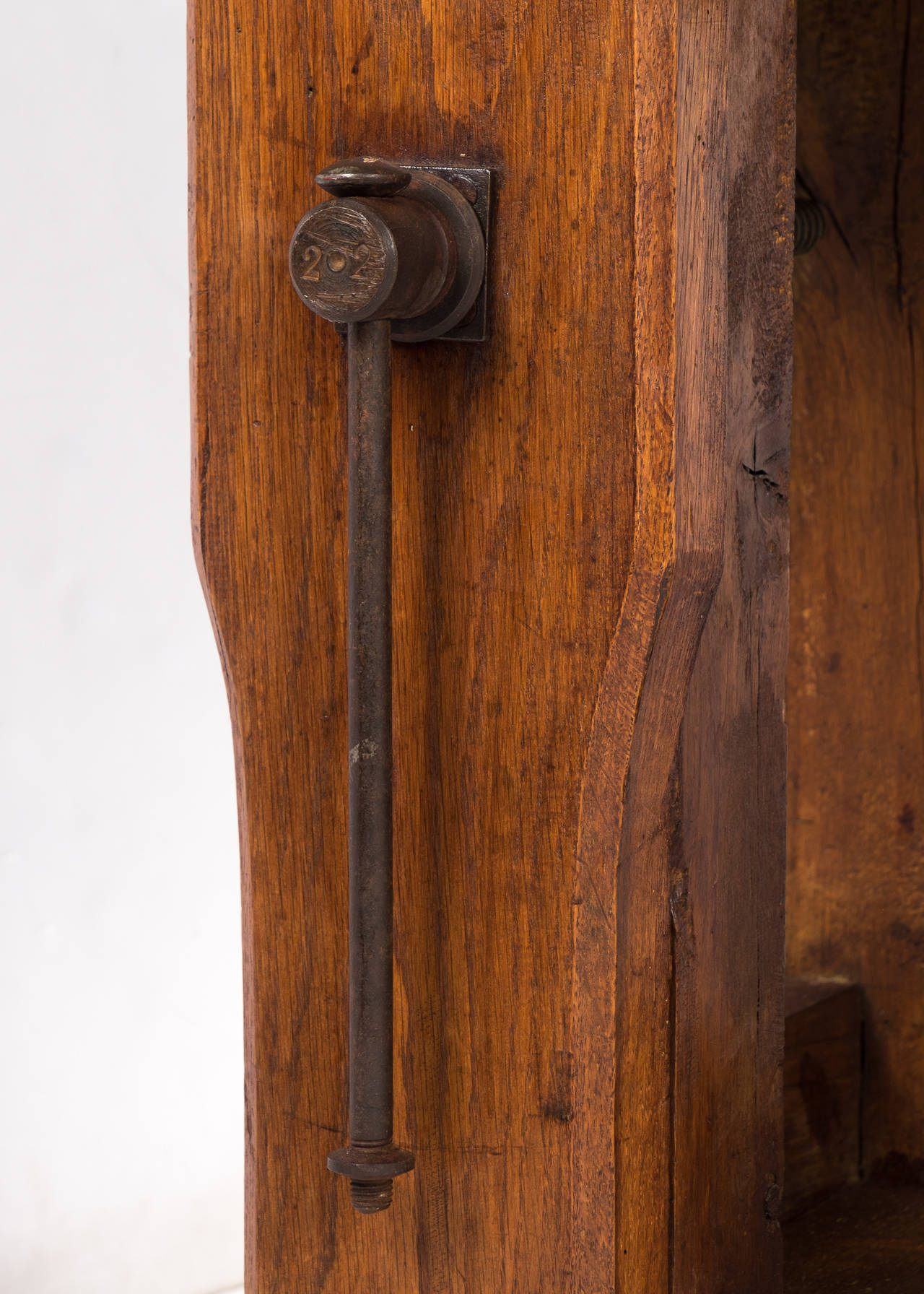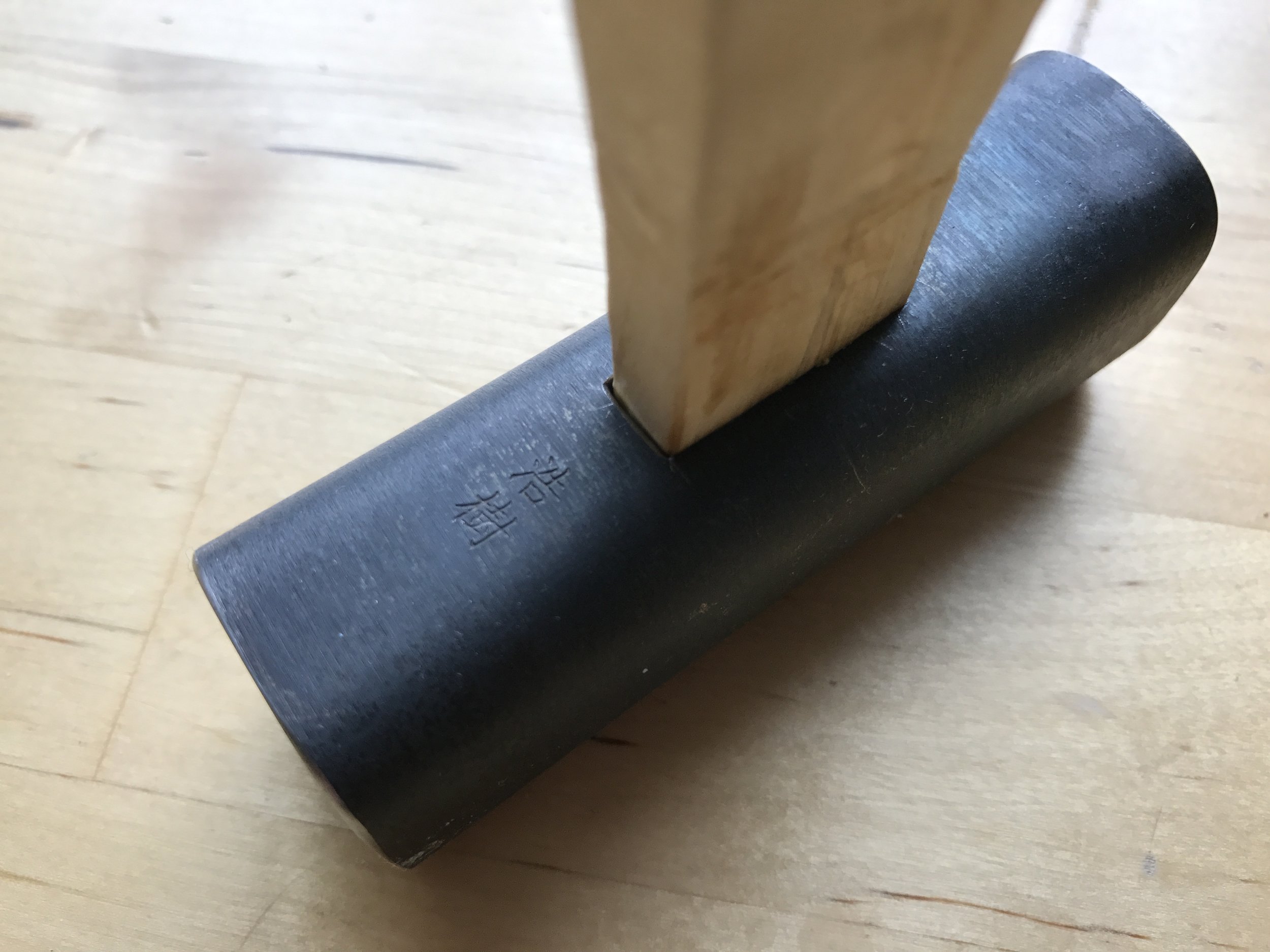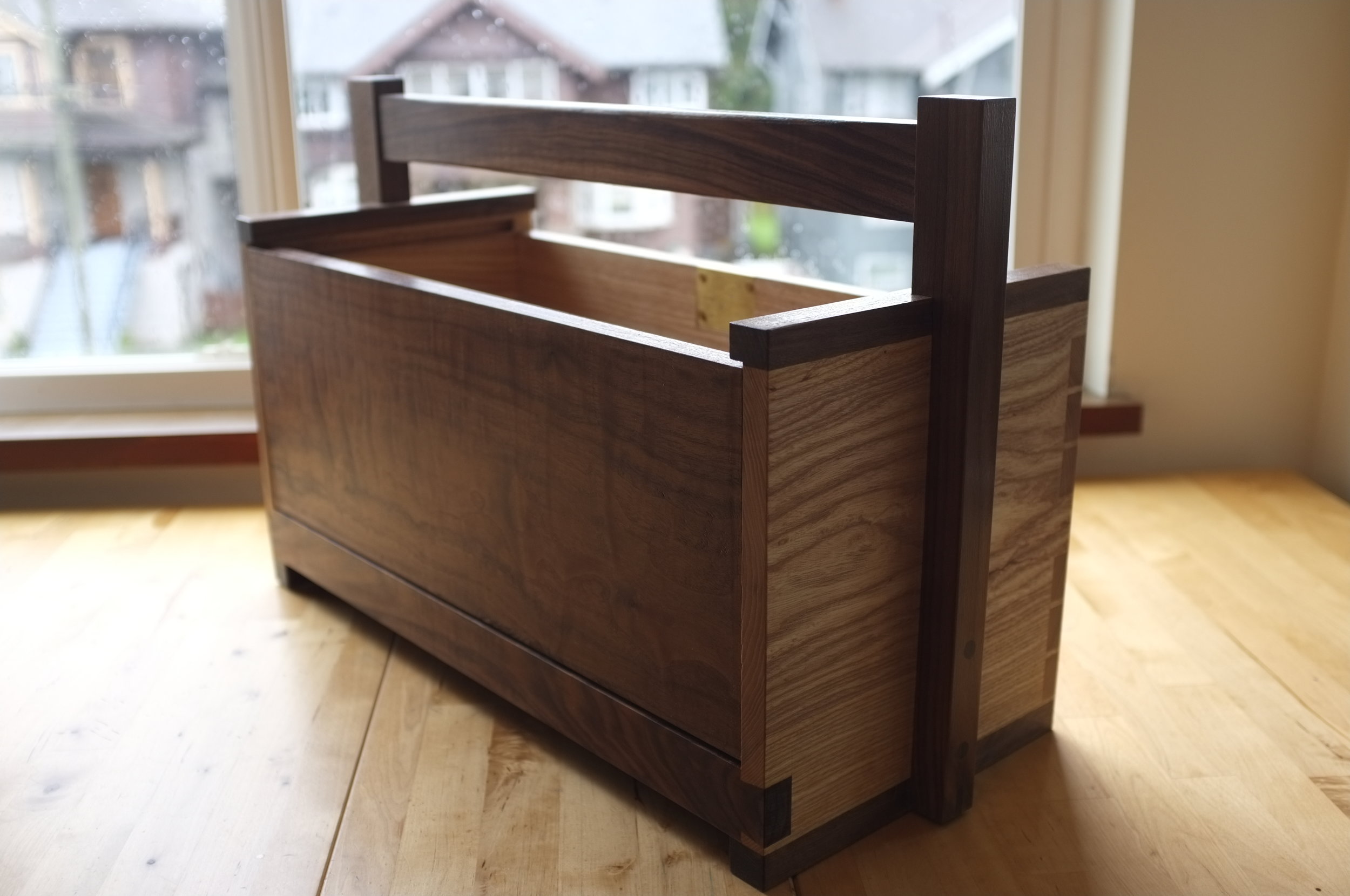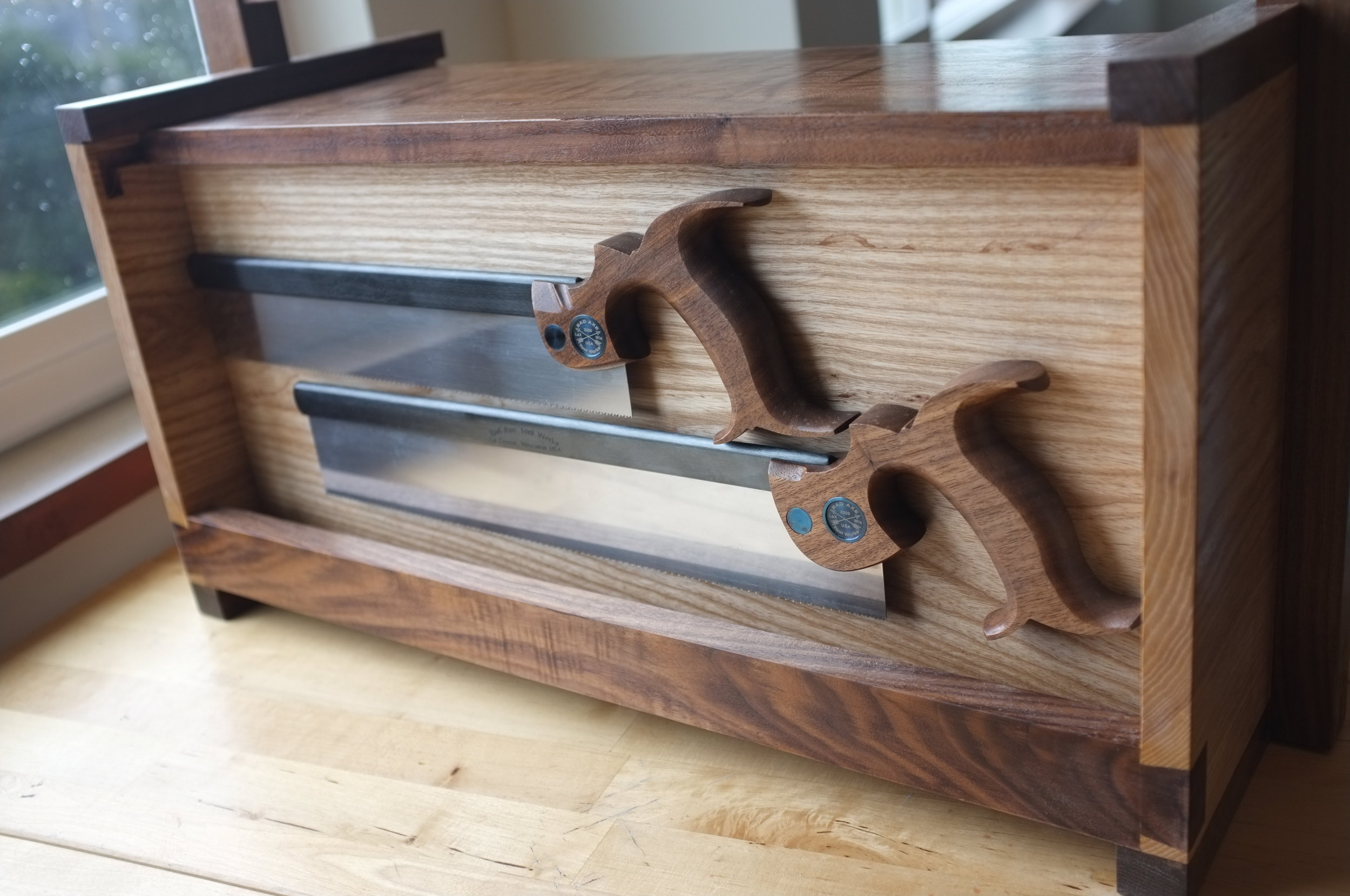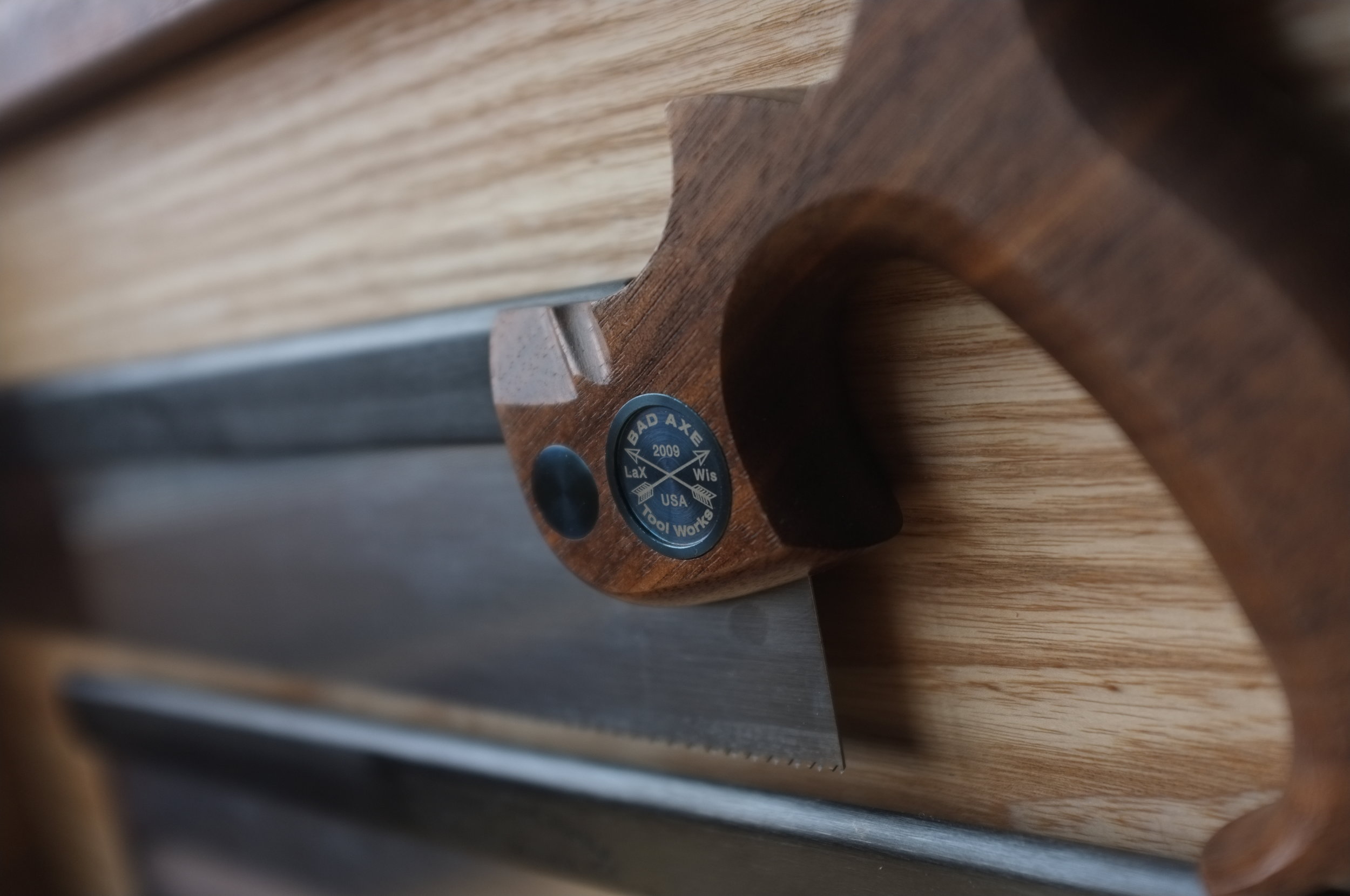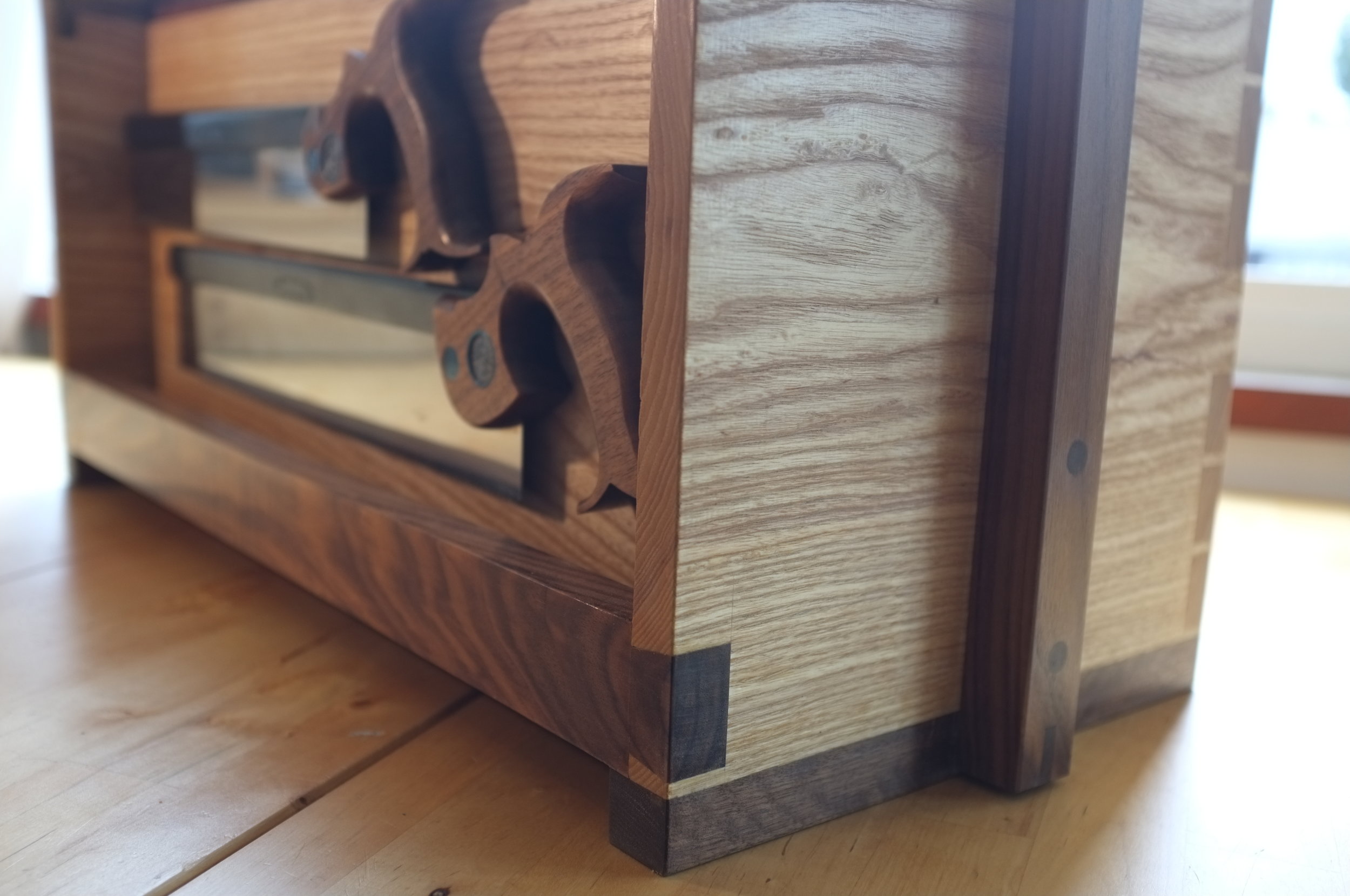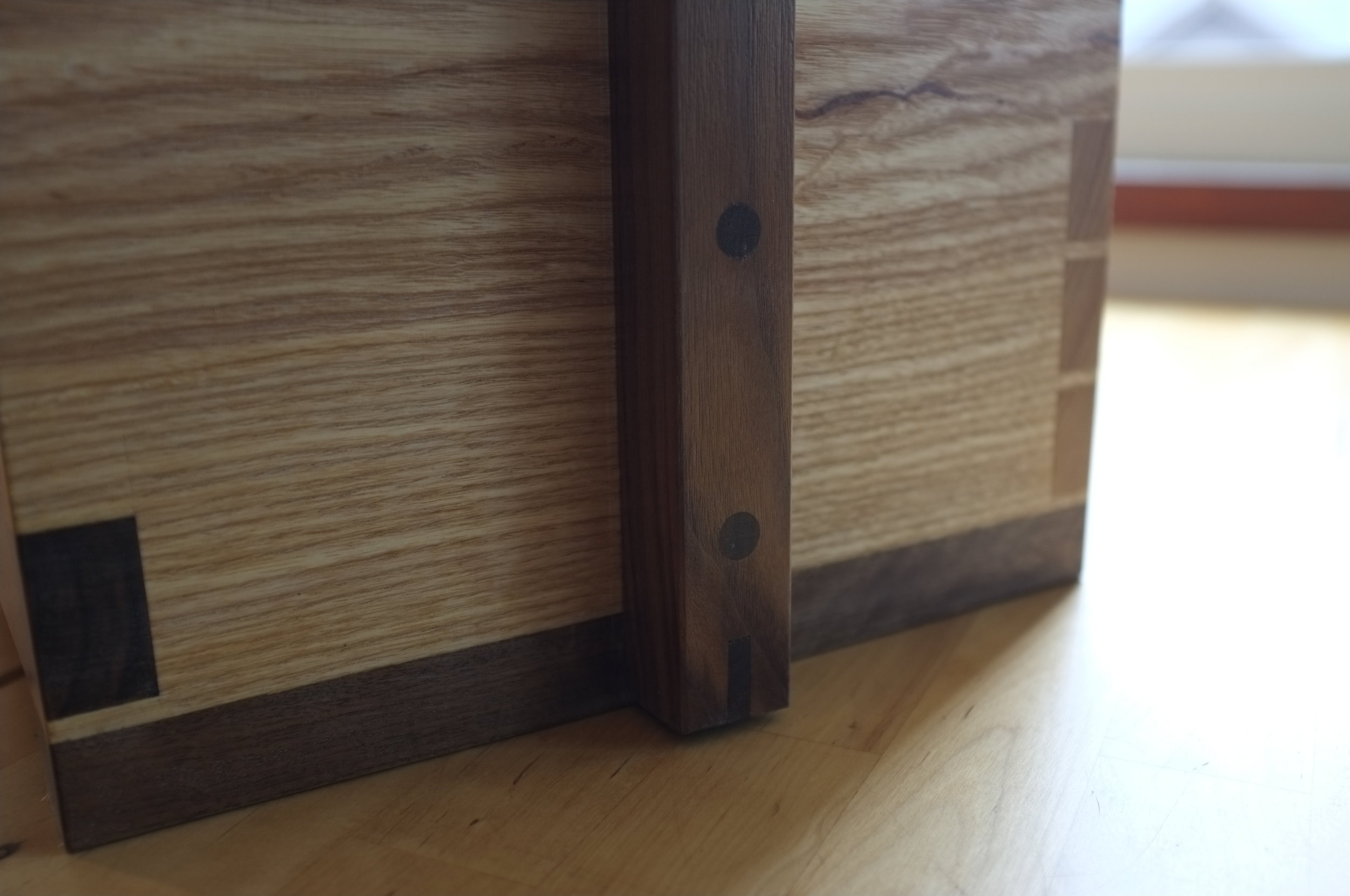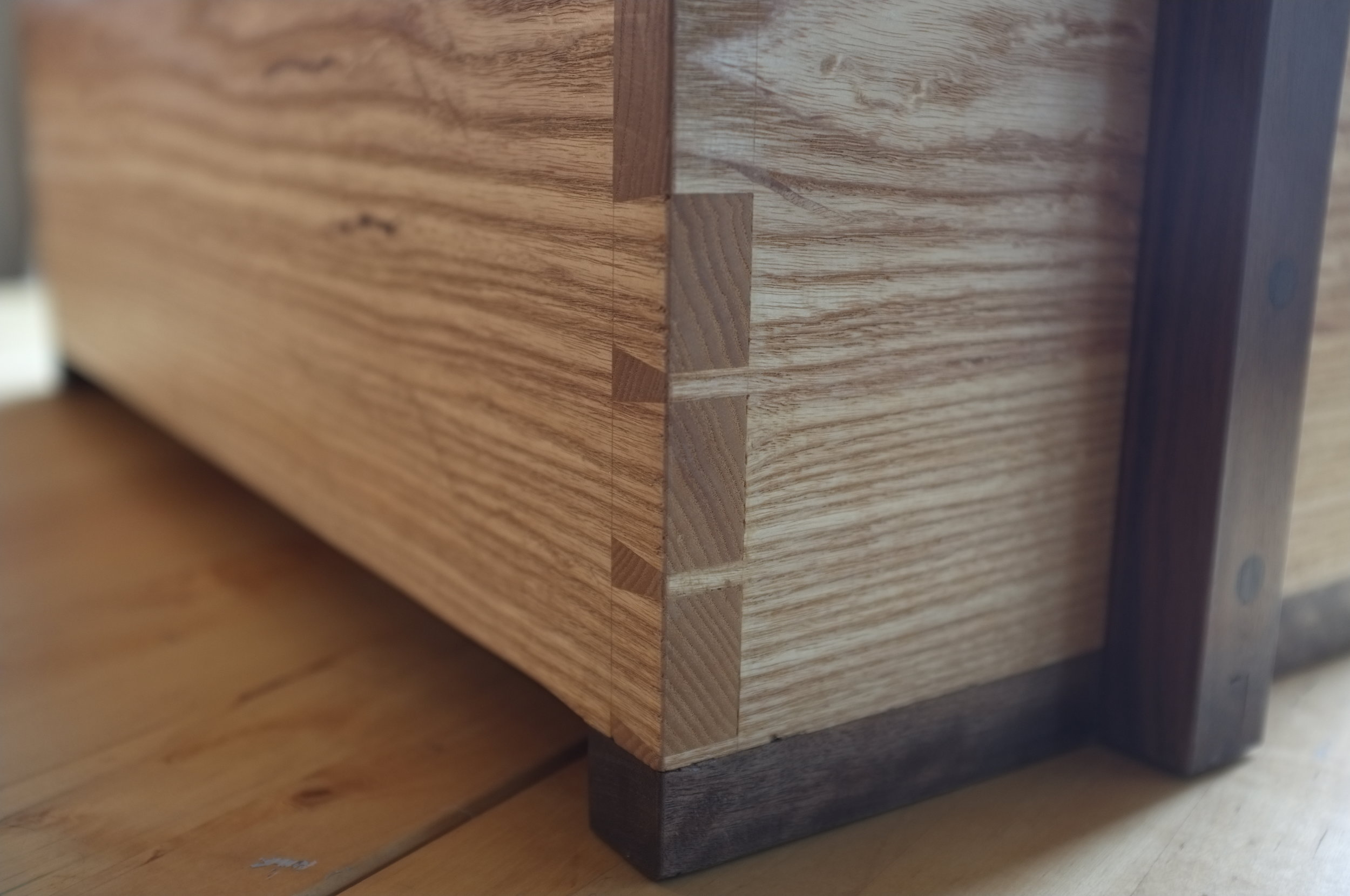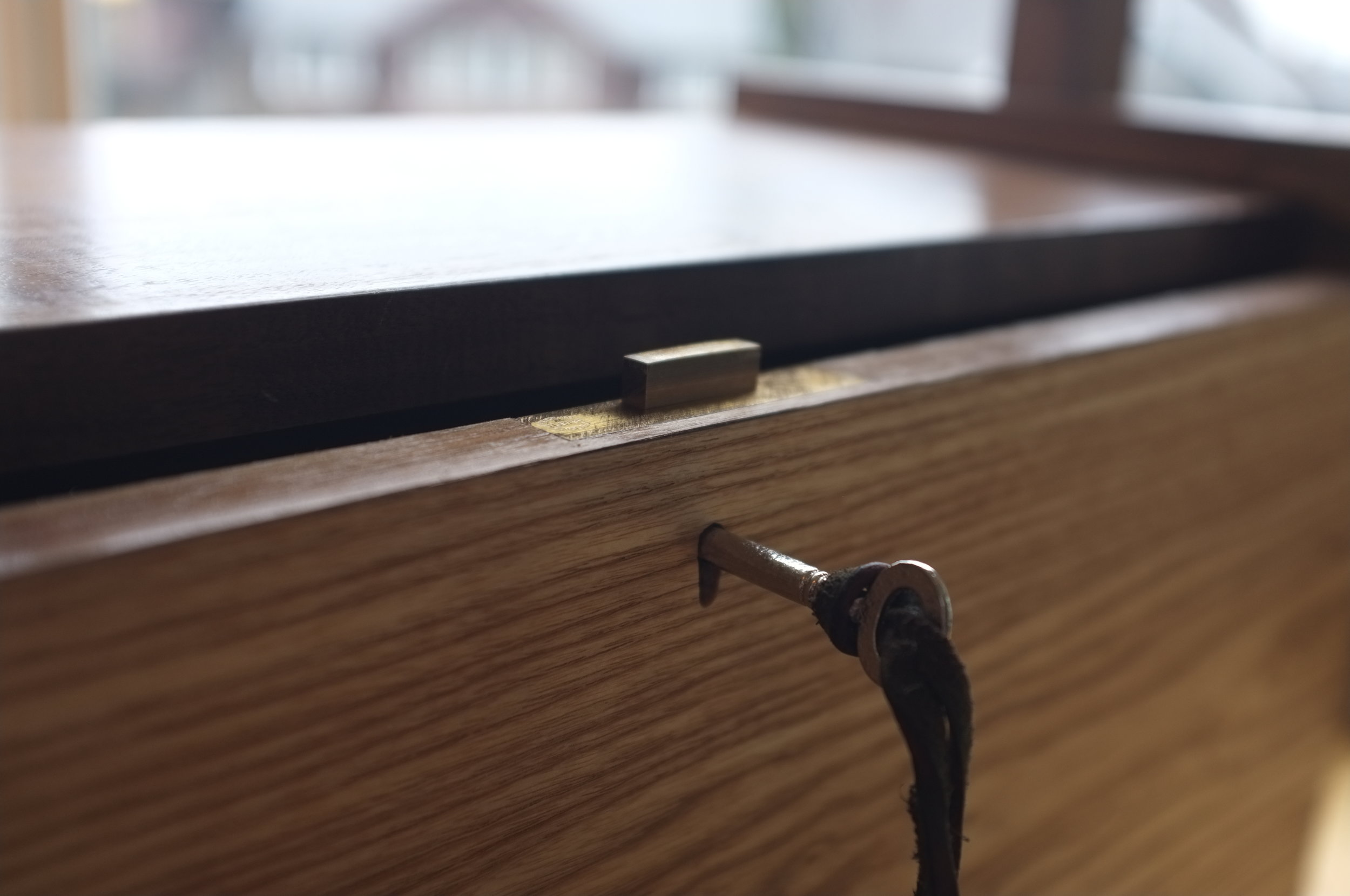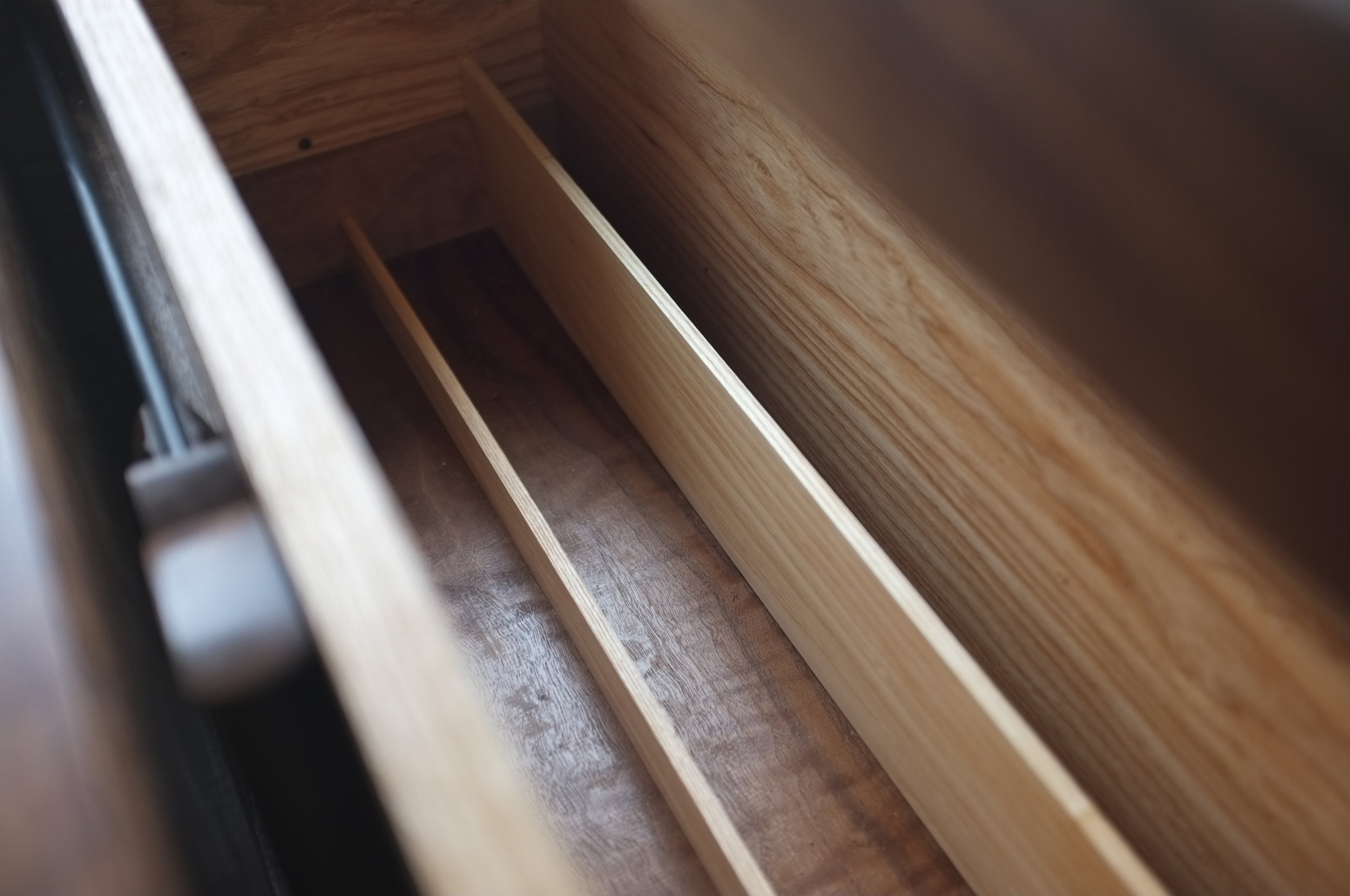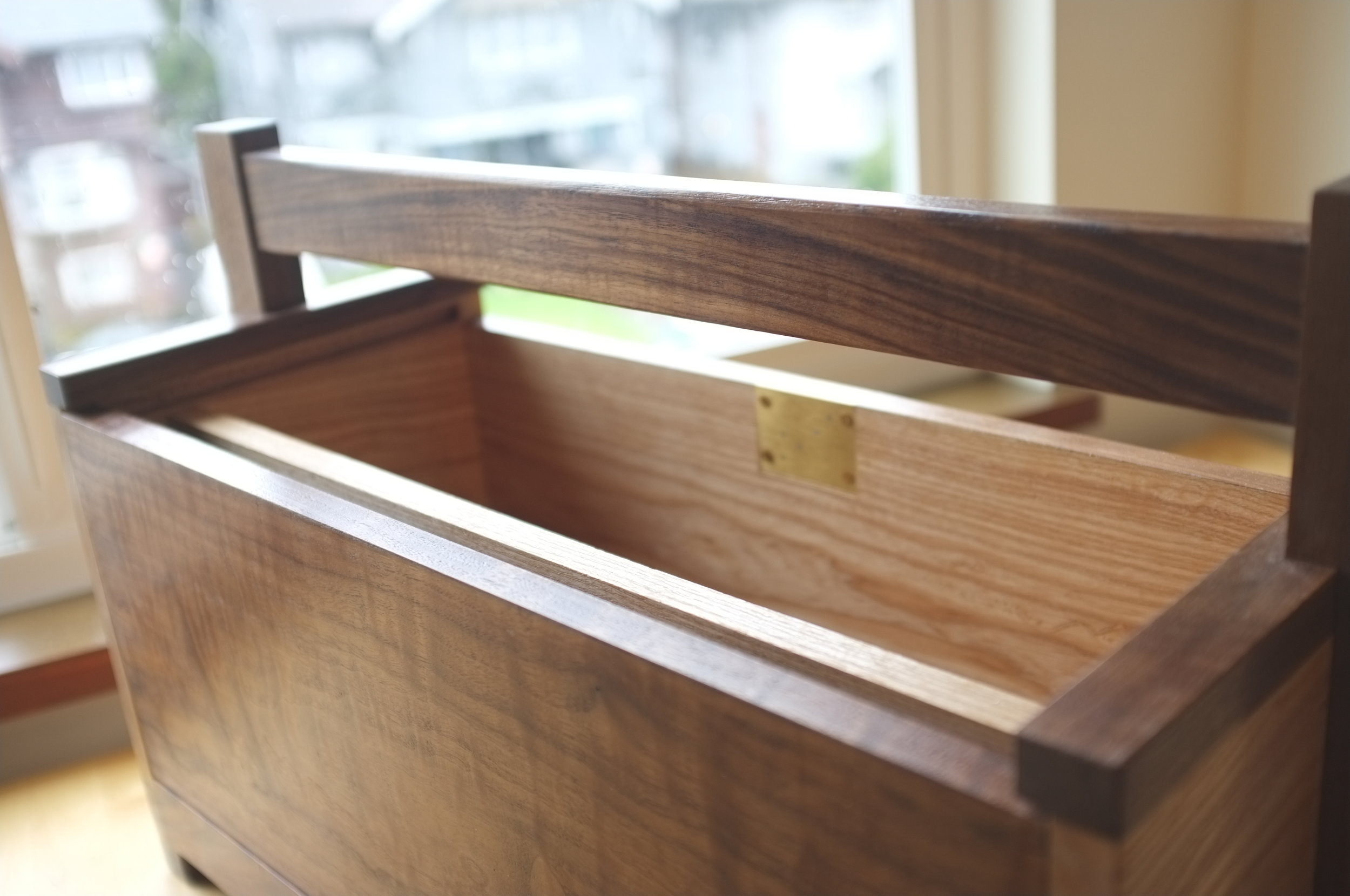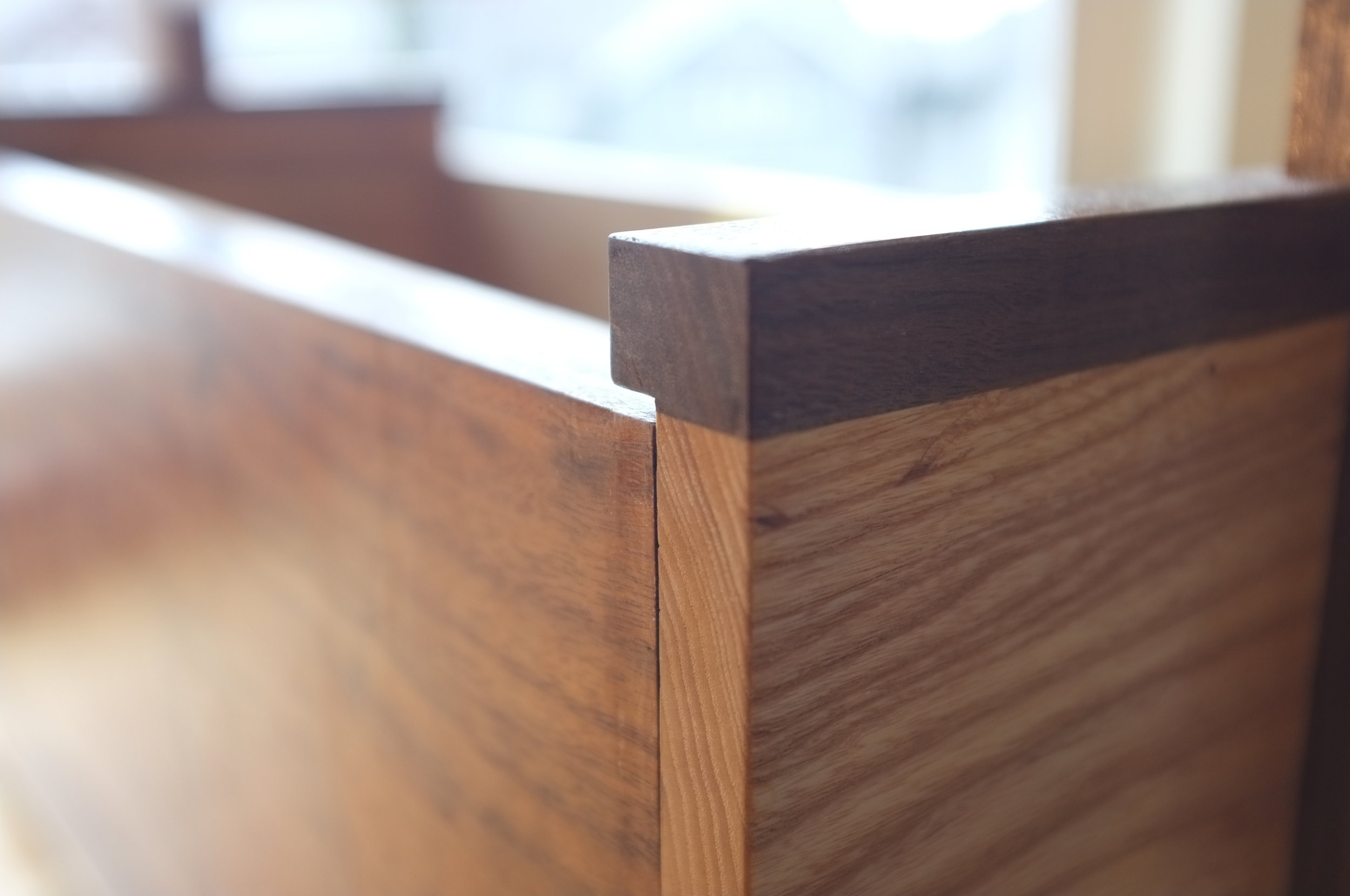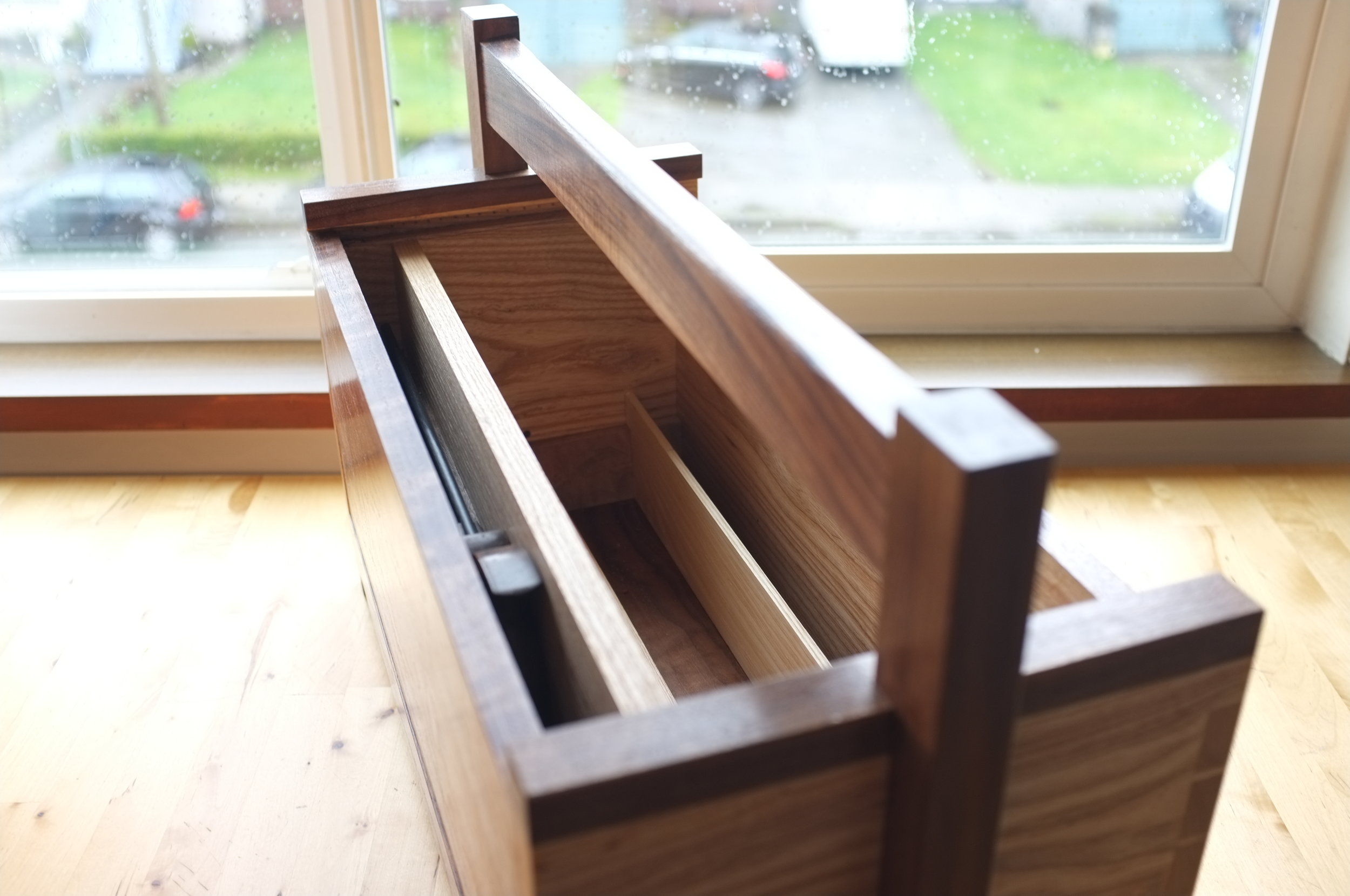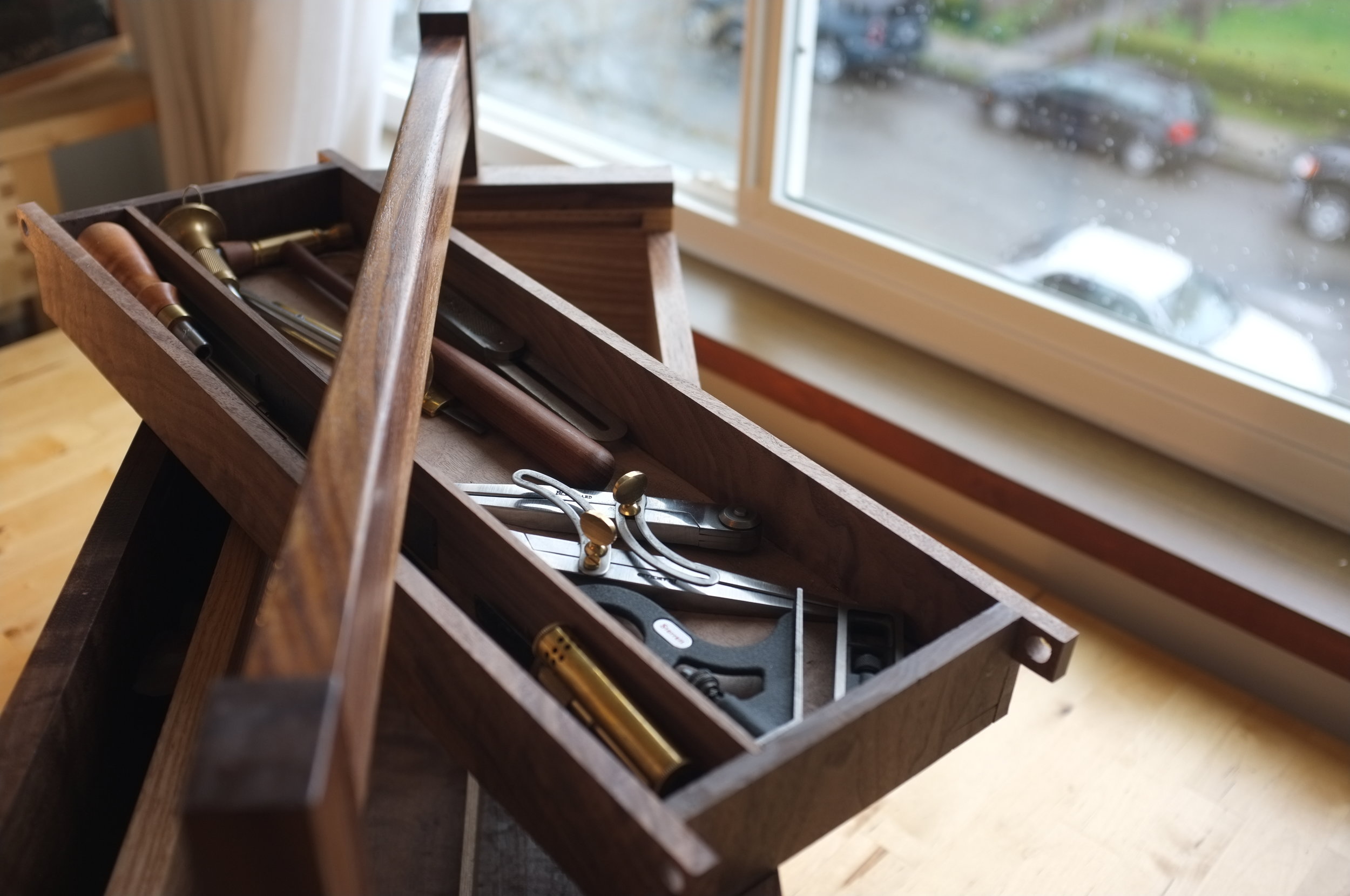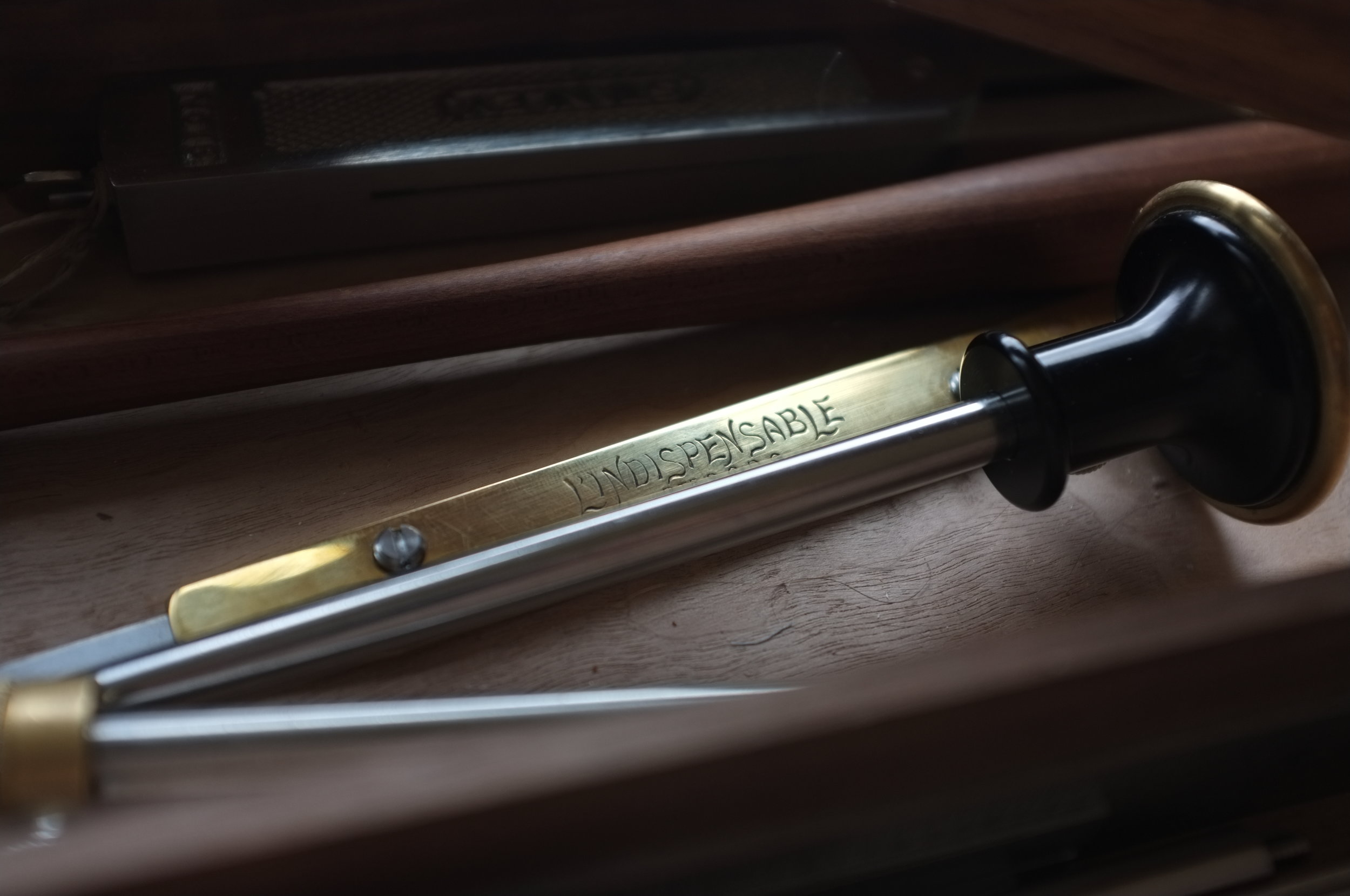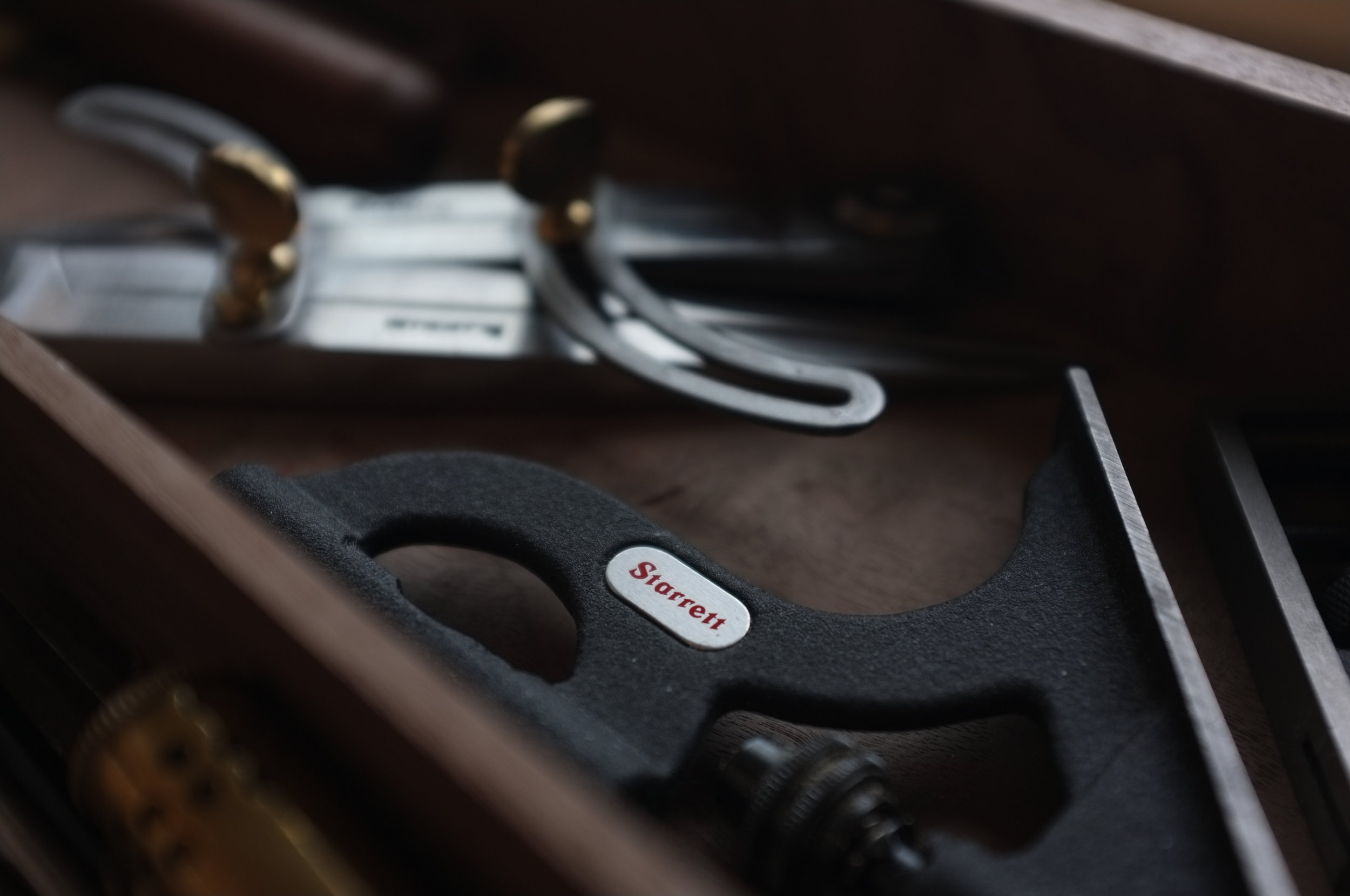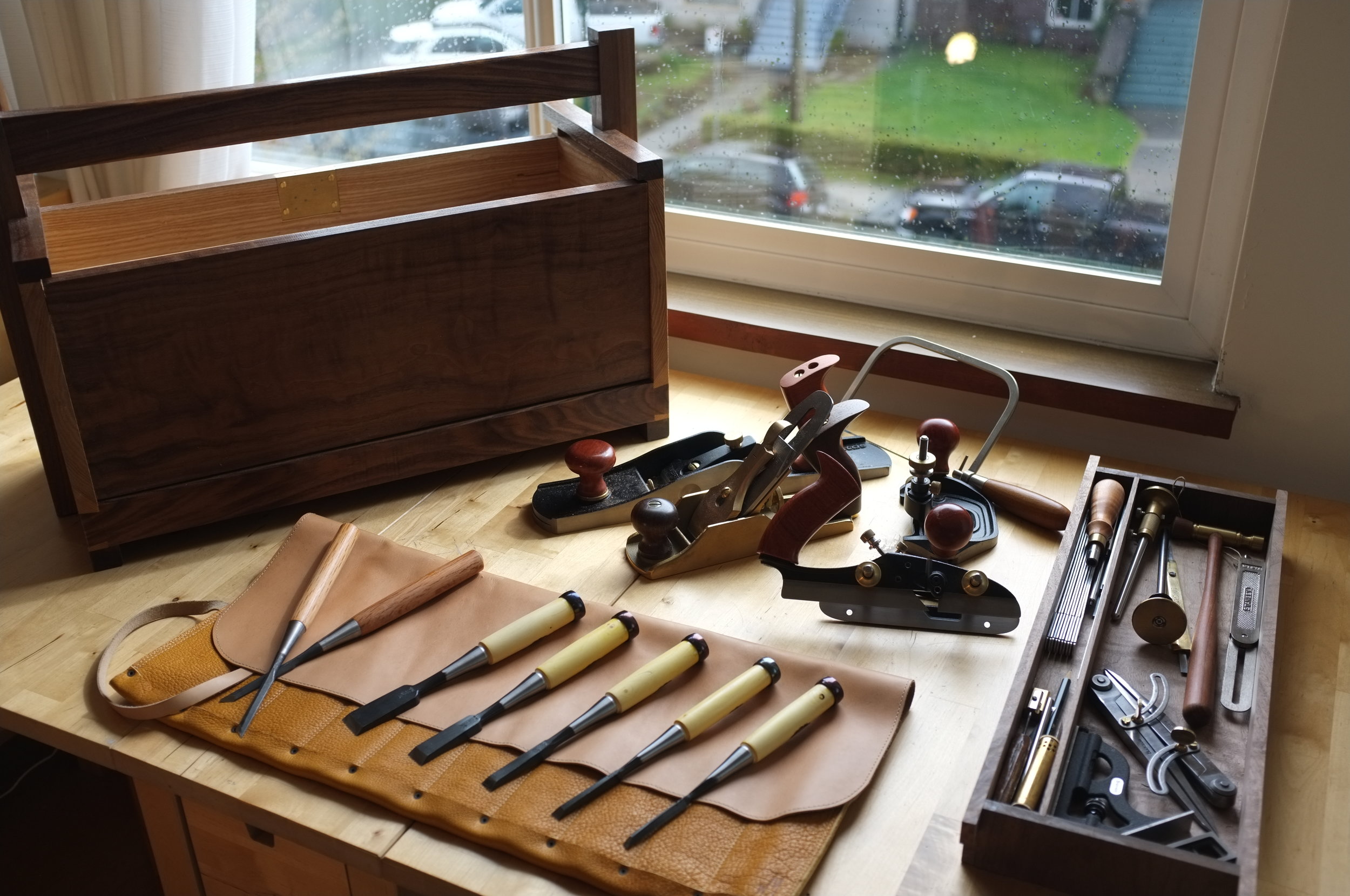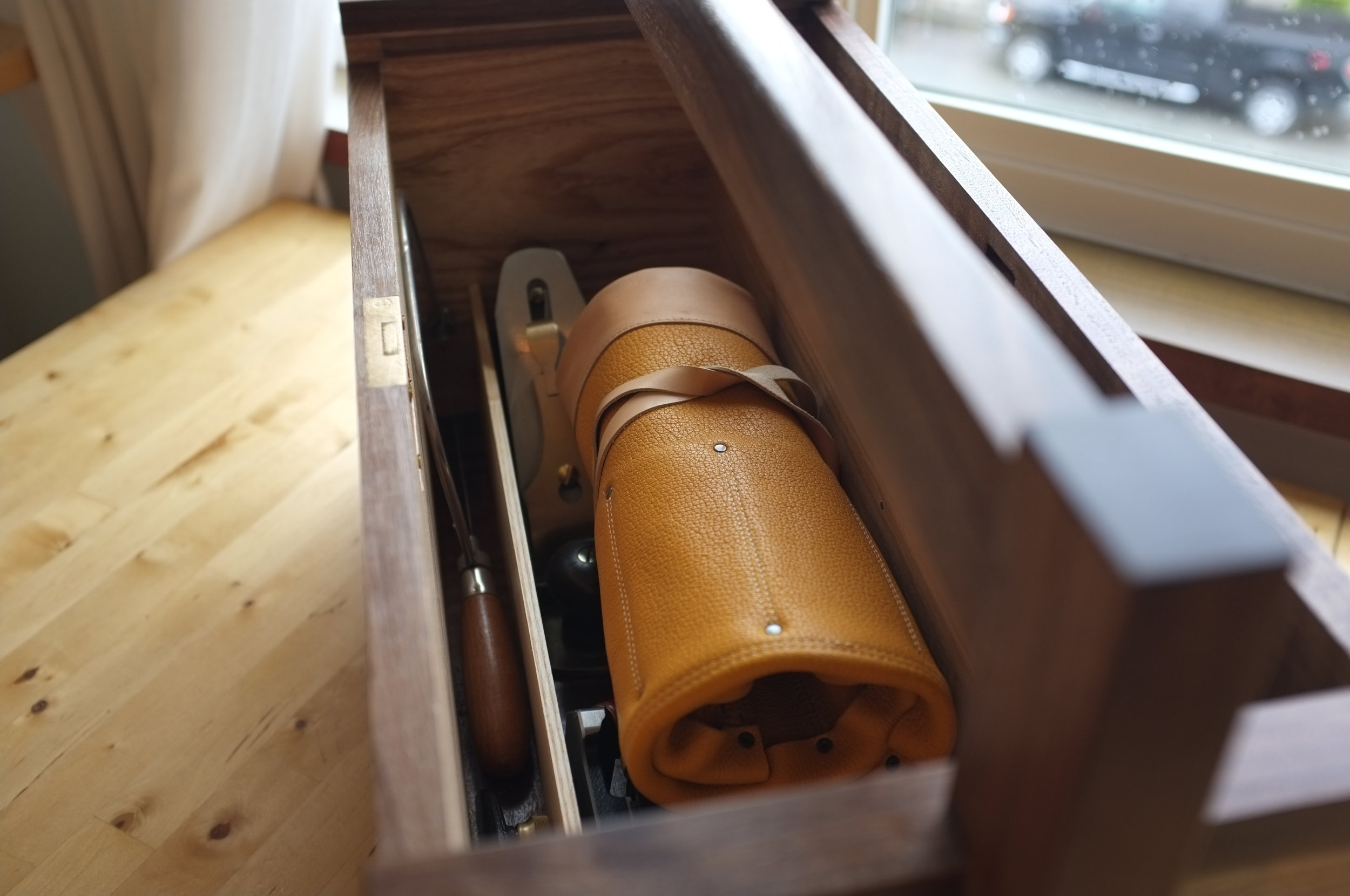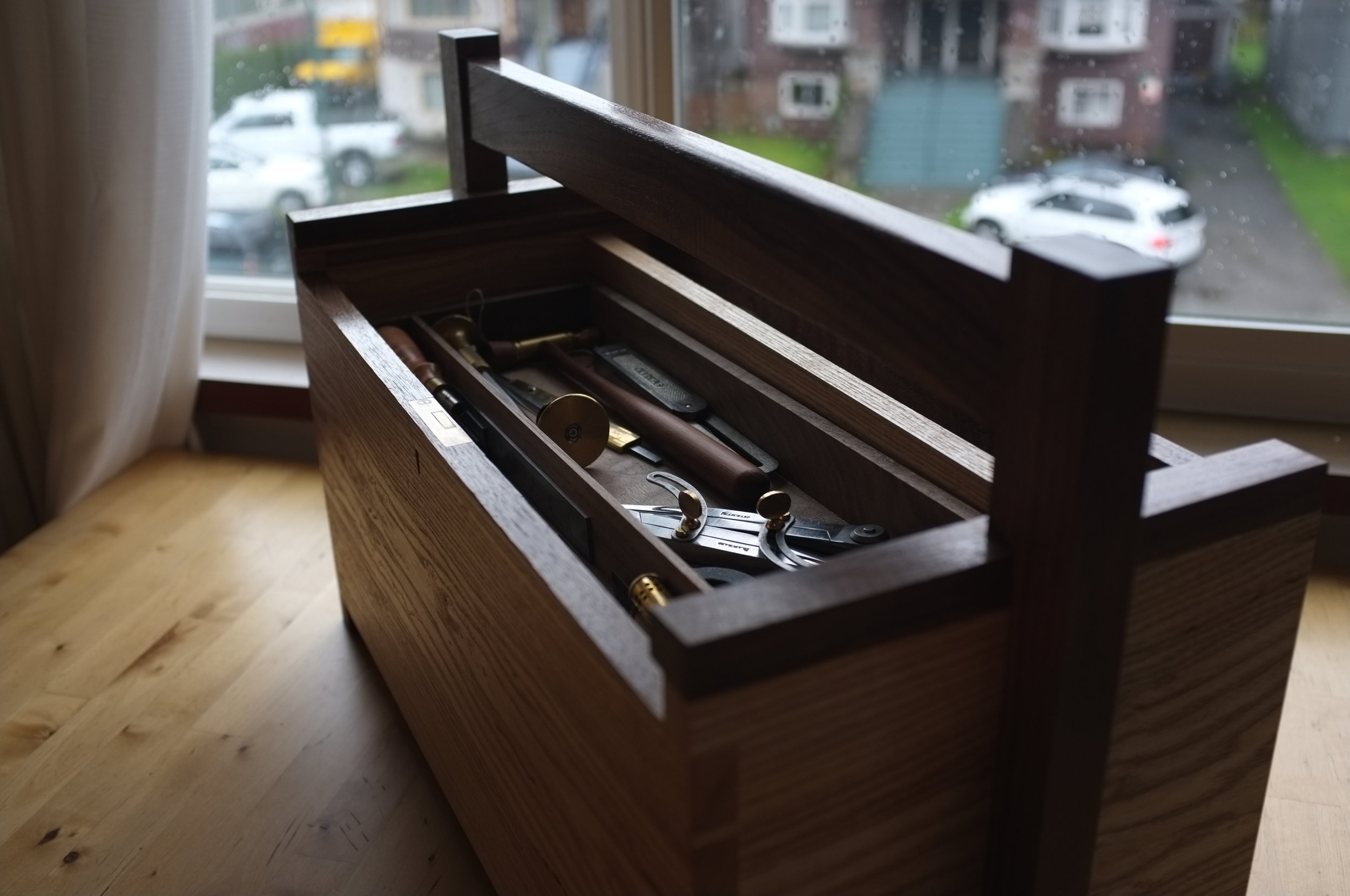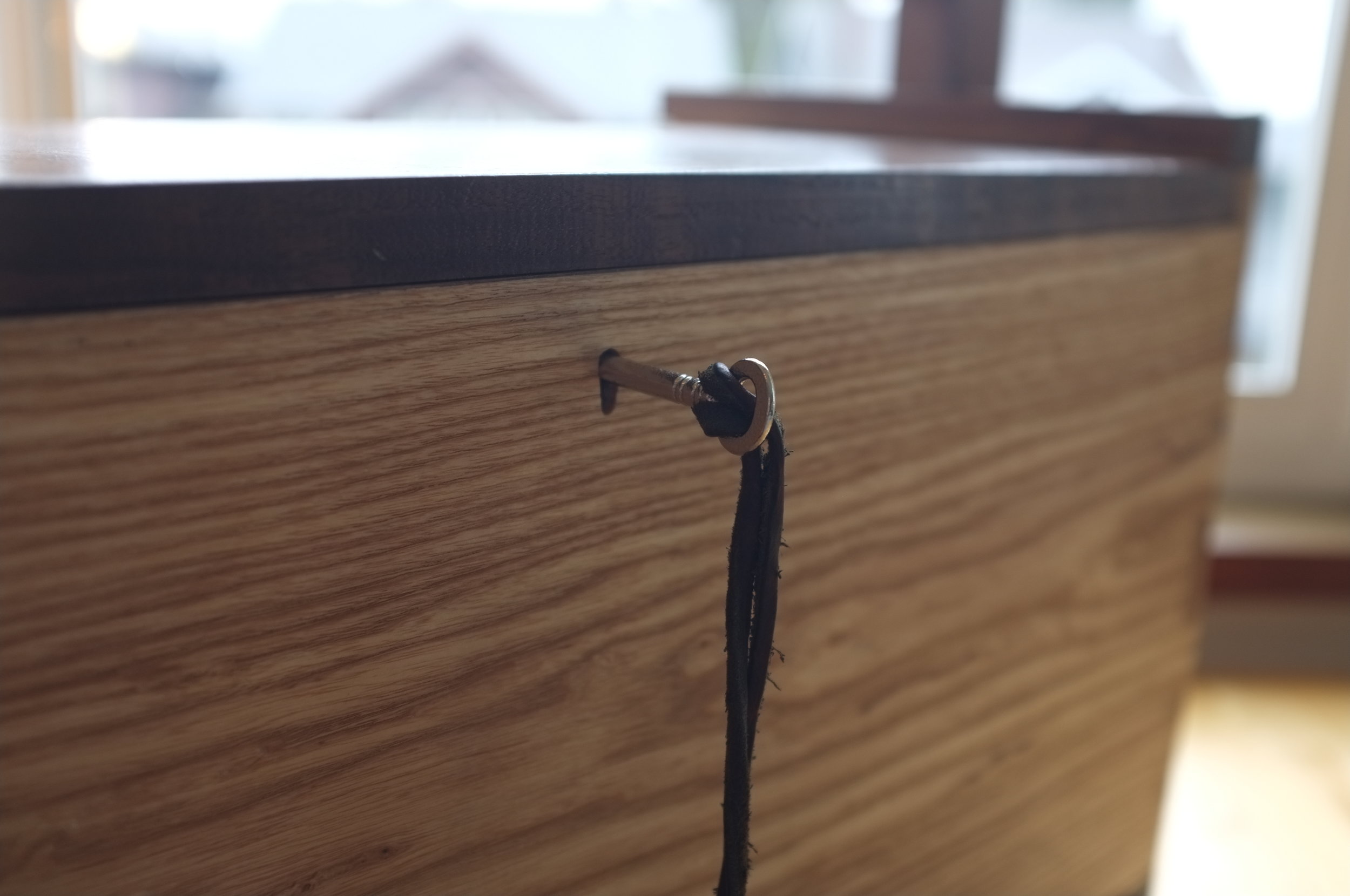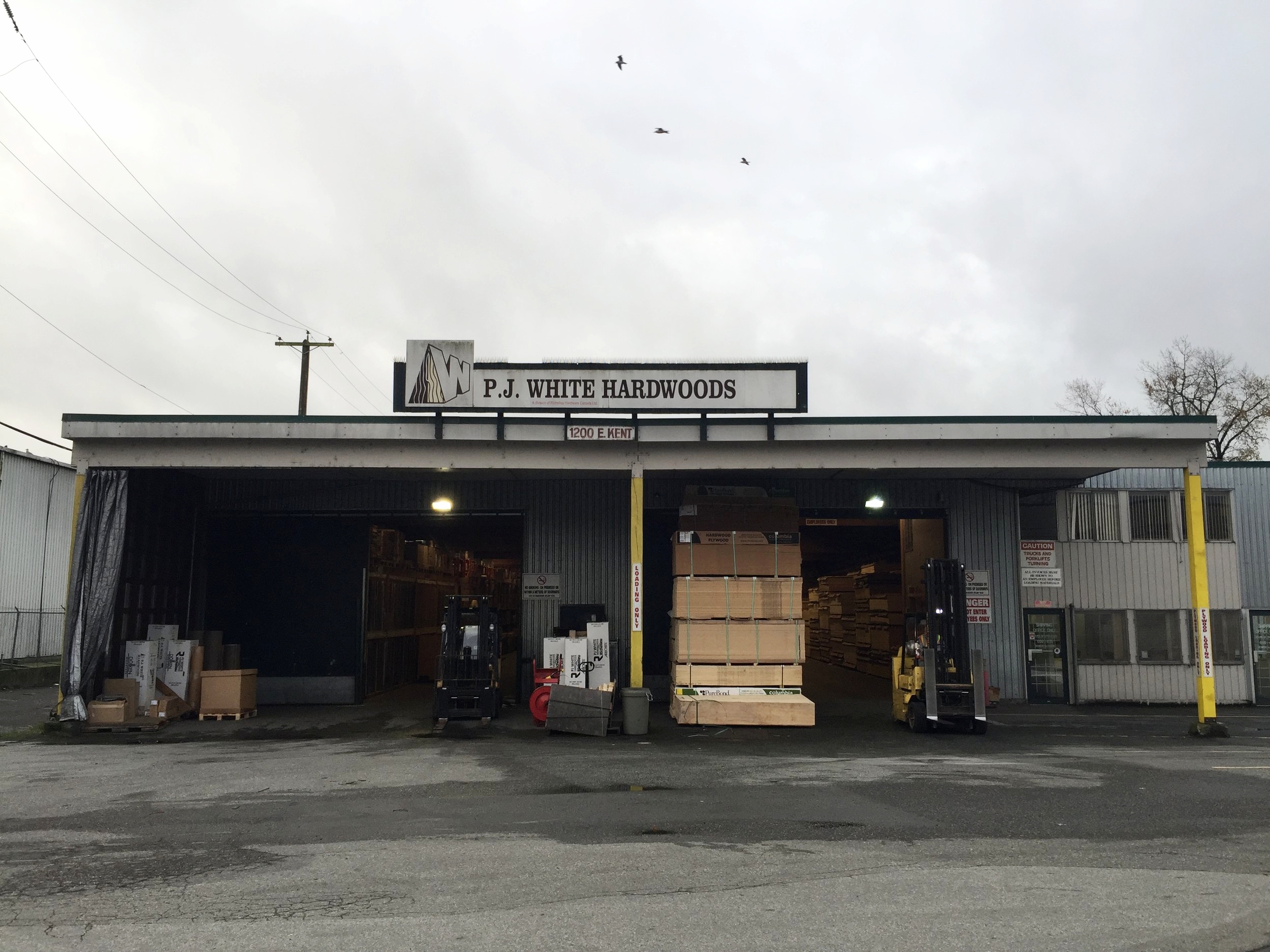Perhaps, many years from now, people will look back at how the pandemic brought out the best and worst in us. I hope a subset of this exploration looks at craft in the time of a pandemic. In this forced retreat from society and self imposed isolation it’s been difficult to be productive let alone creative. Even still, some ideas have taken life and will exist on, into better and brighter times.
Lessons from the bench
It’s easy to cheat yourself out of experiences when woodworking. The crosspin is one of the more difficult parts of building a krenov plane. Some will elect to just use a dowel, others will create a jig and use a plug cutting bit. I tried and failed with a plug cutter multiple times. It’s a fussy setup and I never could get it quite right. This pursuit of efficiency and repeatability came at the cost of developing hand tool skills. Filing square to round and trusting your hand and eye. Took it slow tonight and did it right way, all while listening to an excellent podcast by www.handtoolbookreview.com. Check it out.
X marks the centre spot
Defined the shoulders with 4 quick cuts on the bandsaw.
Slowly taking down the corners
Hard corners, soft edges
Finished the shaping and refined the fit.
A Hand Tool Cabinet
Time for another right of passage build and this one’s a big one, a wall mounted hand tool cabinet. I’ve given the design and tool selection a lot of thought but I’ll save that commentary for another post. First things first, the shop needed a good tidy and my wood rack need some kondofication.
The first cut is alway a big one. The makita had just enough depth of cut to get through this.
Edge ripped. Caught the poor positioning after taking this photo and moved the slab to avoid cutting into my workbench.
This slab is going to be too wide for my jointer, time to break out the No.7 and get to work. Once semi-flattened the planer should be able to do the rest.
I’m really enjoying the color gradient of this walnut. I think I’ll use this particular slab for the frames and panels.
Stay Sharp
I’ve been away for awhile, this year has been exhausting which has sapped my energy for extracurriculars. Things are normalizing now, to whatever has become this new normal and there’s a long winter ahead. I needs something keep me busy and not slip into a sedentary hibernation. I’d like to try my hand at building a nice tool cabinet, however the state of my shop and tools need a little attention. This little lie nielsen sharpening jig was a good project to ease back into it. Next will come a few more krenov planes, easy to knock out while the wood is acclimatizing. And then on to the cabinet.
Offcuts
There’s something deeply satisfying about making your own tools. After finishing the bench build I was left with a good sized offcut, which I decided to use to make few krenov style planes. This one’s a jointer which is just over 19” long. I’ve laminated a pau ferro sole for durability and bedded the iron at just over 45 degrees. Decided against a chip breaker, as I wanted to keep it as pure as possible… besides I have a distaste for routers and didn’t want to mill a slot for the chipbreaker screw. I’m able to plane figured maple glass smooth so i’m not too concerned about tearout issues. I’m particularly happy with the form and I plan on making a smoother and coopering plane in the same Art Deco speedster style.
A Means To An End
I’ve been building this bench for so long that I’m a little sad to see it come to an end. It strange, usually projects tend to drag towards the end but this one really accelerated, so apologies for cramming a lot into this last update.
It’s been a challenging build but also a rewarding one. What i’ve liked most is that some elements have just fallen into place. The asymmetry in the top was dictated by the size of stock I had on hand. The two piece top was made of 4 beams, one was a good 7” wide and the rest were a little smaller. I used the 7” piece for the front as it was widest and it didn’t make sense to rip them all to a common width just to have the centre gap land right in the middle. I actually really like the fact that the work surface at the front totals 13” at the front and just over 8” at the rear. I also really like the fact that the 7” beam worked out to be exactly the same width as my sheldon vise. This really helped with the installation. The material for the legs had its fair share of structural defects, but all were addressed through epoxy reinforcement. It worked out to be kinda neat that I had enough material for 4 gnarled legs and 1 clear top. Without getting too mystical, in some ways i feel the bench build itself. Or at least dictated its final form. Anyways, on to the picture show.
The top was a bear to trim. I was able to make a kerf cut with my track saw but i still had 3” or so to hack through.
Man this was tough work. I nicked my fingers several times with this Ryoba, should have taped the edges….
I used miller dowels to secure the ledgers for the bottom shelf. Didn’t have to but if anyone ever looks up my skirt they’ll see a craftsman.
Next, on to the shelf boards. The veritas small plow is a finicky beast, can’t say i’ve mastered it but i was able to fiddle with it enough to get it plow an acceptable tongue and groove.
I find this type of work to be some of the most pleasurable. Light chamfering with an apron plane and a chisel.
Here she is, in the raw. Still needs a good danish oil bath and a few dog holes.
Made a quick jig to drill the dog holes straight and true. Lee valley sells this 3/4” brad point bit and 1” bushing, they make things easy.
On to flattening. You can see here the front beam lamination was slightly proud. All in all everything was sitting relatively well and it didn’t take too long to get things dead flat.
Full length shavings tell me I’ve found true flatness.
And when everything’s said and done here she is.
Another roubo workbench enters the world, built with wakened hands & built for a lifetime or two.
Beams to Dreams
It’s time to get started. No more planning, no more thinking and hopefully no more tooling up. First order of business is to start cutting my beams down to size. Though it’s not as straightforward as it might appear. I’ve learned a few things about buying wood, some which I already knew but didn’t quite register with me. I guess i’m an experiential learner… 1st off, country folk are savvy and you should drive a hard bargain. I still can’t decide whether I got a good deal… On one hand, walnut beams are exceedingly rare and should cost a small fortune. On the other hand these beams have checks, pith, debris and the tree ate a small fence and a few lag bolts back in 1982. All in, I probably did very well, especially considering I wouldn’t have been able to buy the same amount of wood in ash or oak from the local hardwood supplier for any cheaper. Actually it would have been close to double. The trade off is that I had to dig metal out of a few beams, I’ll have take care to mill the pith out where ever possible and I’ll probably end up having more dutchmen than than the Netherlands.
It took a bit of rotisserie but the bosch glide got it done.
Used a mdf sled to get straight and true edge.
Hot damn, it actually worked!
Legs were looking a little hairy and needed a shave.
I wasn’t kidding about the pith & checks. I might need to drown those dutchmen in epoxy.
proto-roubo | walnut-henge
An Industrial Revolution
The machine shop side of the workshop is complete. Ducting has been run and the sub-panels in. I won’t go into too many of the details as it was more of a hassle than anything else. Numerous trips to home depot, rona, lowes, to purchase all manner of ducting, fittings, screws, hose clamps tape, in various diameters, gauges and orientations. But it’s in and I have enough parts left over to build a small space station. Nasa, look me up if you’re reading this.
A French Connection
I’ve been deep in the minutiae of workbenches for some time now, it’s been one of more extensive rabbit holes I’ve travelled down. I’ve poured over all the books, have read countless build threads and I think I’ve reached a point where I have a clear idea of what I want for my own. Initially, I was really drawn to Chris Schwarz’s cherry slab roubo, to my eye’s it was just about perfect except it was a little on the small side. It has a purposeful honesty about it, whereas the more popular “benchcrafted” style benches come across as more cold and clinical. My plans changed when I stumbled across 1stdibs.com, which is a veritable treasure trove of workbench design ideas. And it was there where I found it, a french bench with perfect proportions, a design which sang to me across the centuries, and It’s the one I will build. It differs from the modern roubo interpretation in a few ways. Its front stretchers are inset and not flush, It has drawers, lacks the dovetail tenon and has an overall wider stance than most. I’ll need to make a few modifications of my own, I’ll add upper support stretchers , a quick release tail vise, a shelf to the underside and will thicken the top somewhat. It feels good to be able to stop searching, no more endless research, it’s just time to build.
Christopher Schwarz’s Petite Cherry Roubo
The French Bench
A quick sketchup plan
Progress Slowly
If all goes well the shop should be up and running in a couple weeks. An electrician will be by to install a 100amp sub-panel tomorrow, which leaves me with the dust collection ducting to figure out. Haven’t quite decided on whether to use 24g stove pipe single wall duct or to go with sewer piping. The sewer piping is difficult to find around these parts, it seems 6” diameter is only sold wholesale to the plumbing trades…
I’ve landed on machine placement, the layout below seems to have the best feng-shui, however these things tend to change in practice.
Once complete it’ll be time to start prepping stock for the roubo build.
First Steps
I managed to drag two of the six walnut beams into my shop yesterday. A few passes with a hand plane gave me my first look at what was waiting for me. A few checks and cracks but nothing that can’t be stabilized. Moisture is a little on the high side but it’ll come down over the next few weeks. Building this Roubo will be an exercise in timberframing before cabinetry. I still have a lot of decisions to mull over… face or edge grain for the top, cabinets below or open space… who can I trick or bribe into helping me rip them down on the bandsaw.
Japanese Gennou
After drying out the gumi for a few weeks it was finally time to fit the head. Filed a chamfer on the underside of the gennou head and did my best to trim the tenon so that it was tight but not too tight. Difficult work to do with just a block plane and a chisel. It Took about 30 or so good thwacks or so to get it on, I had hoped to get it on a little deeper but I can live with it as is. If it loosens up in the future I'll have room to drive it down further. Once set, I applied a little tung oil to the end to swell things up, I was surprised how much the gumi took in. Should have the final shaping done this week, then it's on to setting up my Ouchi yama-ari oire-nomi.
A Cabinetmaker's Toolchest
The Finishing Line
Time to add a little structural insurance. These miller dowels will lock the lower portion of the handle assembly to the carcass while adding visual detail and mechanical strength. They work by creating a tapered hole using a tapered drill bit which is the same profile as the dowels. I really like using these little guys, they're like the western version of Japanese wooden nails.
Though they're not fool proof... I almost drilled into the floating floorboard. I was lucky and just missed it..
A little end-grain paring.
And a little surface planing and we're done.
Remember those magnetic saw holders? It's time to mount them, again using miller dowels, though this time using the smallest size. It was a little tricky to get the alignment right, there needed to be enough clearance to allow the lid to close and the saws to be positioned so that they were spaced without interfering with each other.
I think it worked out A-Okay.
A quick card scrap and I'm ready for finishing. Am I crazy for liking walnut without a finish? I debated between a tung-poly blend and shellac, ultimately the bugs won out over the nuts.
I went with a 2lb cut of amber shellac applied thick and heavy. I'm not a fan of gloss finishes, I'll knock it right back with steel wool and wax once it's set, but that's a story for another day.
Bandaids
I've made a few slight changes to Tom Fidgen's toolchest design, namely increasing the dimensions somewhat, using a two piece approach for the bottom runners and adding a half mortise lock. It was my first time installing a lock and although the mortising and keyhole parts went well, the selvage was sitting proud of the surface... Oh well, time to learn how to edge band.
I'll be honest, it took a couple tries to cut the banding around the selvage plate and to the exact length of side. On the plus side, it's pretty cheap stuff so I could afford to make mistakes.
After some ironing and rubbing with a block of wood it looked pretty good. The surface was practically flush and only the overhang was left to trim.
A sharp razor blade made short work of the excess, I couldn't be happier with how easily this fix worked out.
The screws for the half mortise are also sitting proud, on Wednesday I'll file them down flush.
Magnetic Attraction
Did you know that putting a magnet in a steel cup will increase its strength by up to 4 times? I wish I had known that before I had made my saw holders. Then again, four 1/2" magnets seem to hold my badaxe bayonet just right. This portion of the build was relatively simple, I used a small forstner bit in a hand drill to bore out a few holes, dropped the magnets in and laminated a thicker piece on top. Nice and easy.
Progress
I glued the handle assembly to the carcass yesterday. Well partially glued, I left a good 5 inches of the vertical handle posts un-glued to allow for cross grain wood movement. I'm fairly confident it'll hold and the handle will be able to easily bare the load of a full toolchest. My joinery was tight and the clamps held everything flush to the chest... Though I do have a nagging feeling that I should overbuild this part, i guess my inexperience is showing. I think I'll leave the bottom bridal joint un-pinned but add a couple of large miller dowels to each side to lock everything in place. That approach should work to transfer the majority of the load to the sides and add a bit of aesthetic detail. It feels good to make progress, I've passed a major milestone.
Joinery
Problems are for solving. Careful divider spacing will lay waste to this knot.
I prefer a 240mm dozuki for dovetails.
Slowly now, it all comes together.
Tight like tigers.
Selection
In hard places; now is the time to be sensitive. Knots aren't always defects, sometimes straight grain is dishonest, figure lies beneath the surface.
Flat packed for a small car.
Beginnings
1200 E Kent.
